This is the 'world's most aerodynamically advanced road bike', according to Ribble
The Preston brand has three patents pending on the handlebar alone - but we had some questions about the yaw angles used
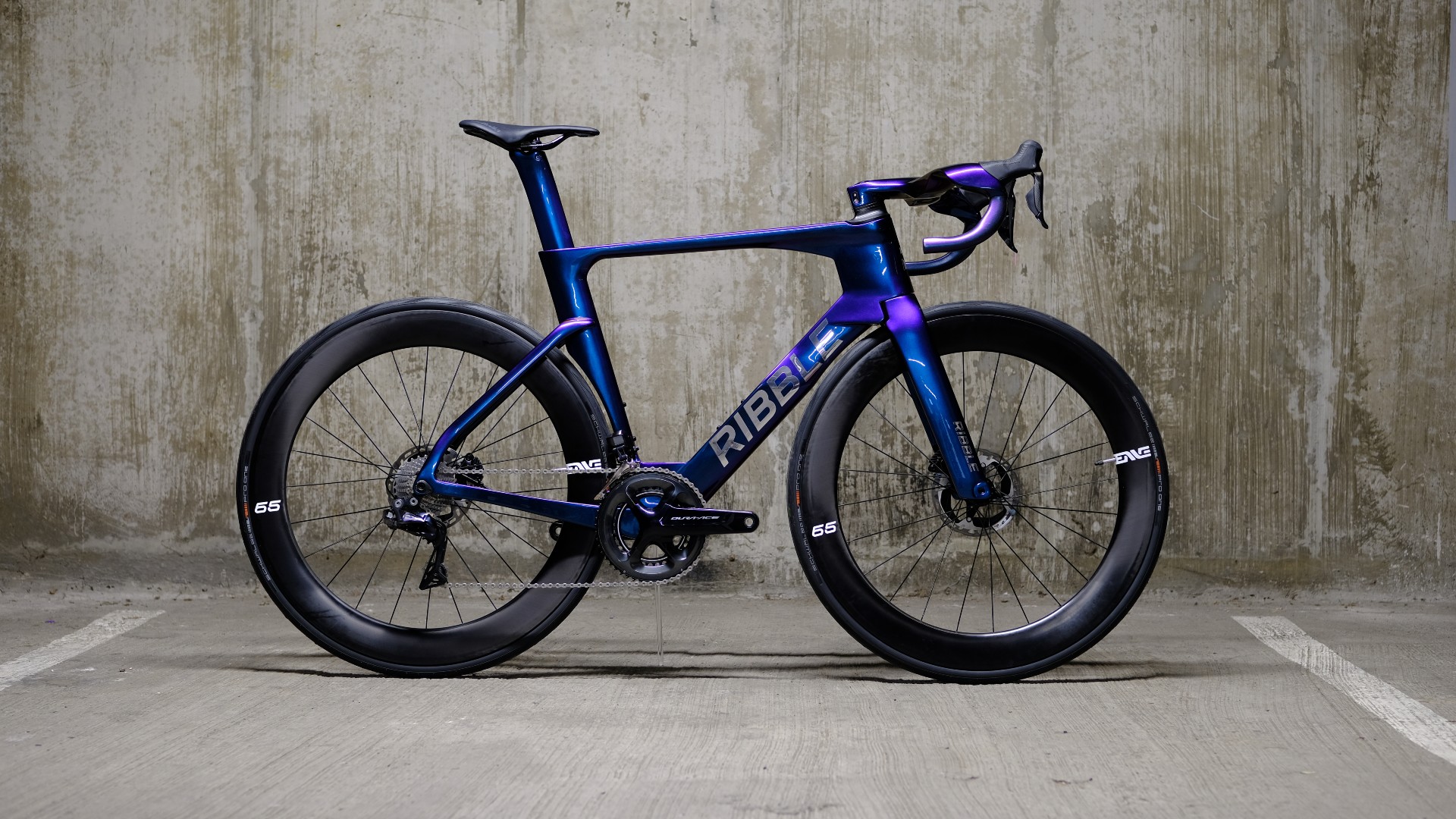

Claiming to have produced the ‘world’s most aerodynamically advanced road bike’ is pretty ballsy for a brand that only opened its own moulds in 2018. But that's the benchmark Ribble says it's achieved, and the Ultra SL R aero road bike and Ultra handlebar is supported by reams of 'rider on' CFD (Computational Fluid Dynamics) and wind tunnel testing data obtained at Silverstone Performance Centre.
The 'rider on' element was crucial in development and testing.
“Bikes don’t ride themselves,” notes Ribble CEO Andy Smallwood, “so we’d effectively be lying to the customer [if we reported bike only gains].”
For consistency, Ribble’s own product manager Jamie Burrows was used as the model rider throughout, with Drops-LeCol pro Joss Lowden, and a mannequin, used in the later stages.
Tests were run at 22 miles per hour, “a more relatable speed for amateur performance riders, like myself,” says Smallwood, as well as 29mp/h, since this will be the bike of both Drops-LeCol and Ribble Weldtite Pro Cycling. All tests were completed across a yaw sweep from 0-20°, with optimisation focused between 5-10°.
Yaw what?
We're going talking about yaw angles a lot here, so, a brief Yaw 101.
Imagine a cyclist riding a bike with a balloon strung up behind them. The balloon's deviation from a straight line increases relative to wind direction, and the speed of the rider.
A 0° yaw angle represents head-on resistance, whilst 20° would be a crosswind you'd be hard-pressed to find during a hurricane at Kona. Ribble carried its testing out across a 0-20° yaw sweep, and Smallwood says the UK average is around 7 to 8°.
There is debate around the correct range to study. As an example, when launching the Trek Madone, the US brand opted for -12.5° to 12.5° (negative meaning the left-hand side of the bike was measured as well as the right).
There were cases where Ribble had a faster profile at lower yaw angles, but chose the shape which provided a more consistent performance across yaw angles from 0-15°. This is counter to how other brands operate, an independent aerodynamicist we asked told us he’d expect -12 to +12 to cover around 90 percent of data points, and 98 per cent at 50kph.
Ribble hasn't provided any testing data for negative degrees, which conventionally means when the wind hits the bike from the left hand side, but when asked, it said it did analyse negative angles, “particularly [during] CFD to pick up multiple leg positions and non-drive components.”
How much faster does Ribble say it is?
Ribble claims that this bike and handlebar could offer a 75.1 second saving over 40km/25 miles (at 22mp/h), vs its own already optimised Endurance SLR aero bike, decreasing to 61.4s for riders going faster (29mp/h) - at an average of 5 to 10° yaw angle.

This table shows the Ribble Ultra SL R aero road bike, against the Endurance SL R - with a rider

This table the Ribble Ultra SL road bike vs the Ribble Endurance SLR, bike only

The SLR bike is quicker - this table shows the Ultra SLR, vs the Ultra SL, with a rider
Big investments on the Ribble Ultra SL R
Ribble being still a relatively small UK outfit, we were curious about where this level of research had come from.
Asked for some more info on the development, the brand told us it worked with the consultancy team at TotalSim, the motorsport and F1 experts that also worked with Vorteq on its Tokyo Edition track handlebar, in collaboration with WX-R.
“The Ultra Road project was led, designed and developed by R&D team at Ribble," a Ribble representative told us, "Ribble utilised specialist consultancy input from TotalSim for the complex computational fluid dynamic testing of concepts and wind tunnel testing at the Silverstone Sports Engineering Hub.”
All of this marks a huge step in R&D for Ribble, but interestingly, it's kept the prices relatively low vs the industry - the SL range (which does not come with the Ultra handlebar) starts at £3,899, the SL R models begin at £4,299.
Ribble Ultra handlebar
The Ultra frame itself has seen extensive development, but I am most excited about the handlebar, so since I’m orchestrating this story, we’ll start there.
There are three patents pending for the handlebar: one for the use of a direct mount brake lever mechanism (EP20205557.0), one for ‘aero wake generators’ (EP21173702.8) and one for the ‘aerodynamically and ergonomically optimised drop section’ (EP20205558.8).
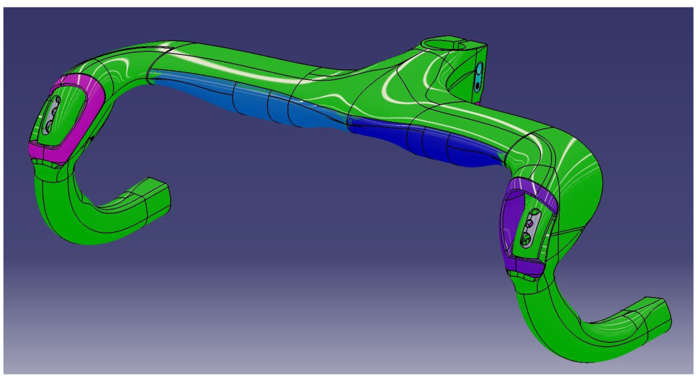
Ribble's Ultra handlebar has three patents pending
Much of the development has been made possible by the fact that Ribble’s Ultra bar does away with the metal clamp band specified by groupset brands - which requires the drop end to be a 23.5mm round section. Instead, it uses a direct mount system, with 25mm of vertical and 15mm of lateral adjustment available.
Deviating from the clamp band is a bold move in itself, but the brand is confident, "the contact point is stronger than that of a standard cylindrical carbon bar and isn’t subjected to the crushing risk posed by the conventional clamp,” Ribble's rep said.
Shimano's PR and Communications rep Ben Hillsdon told us: “As far as the manuals go, we don’t recommend using the product other than as stated in the information in the dealer manuals."
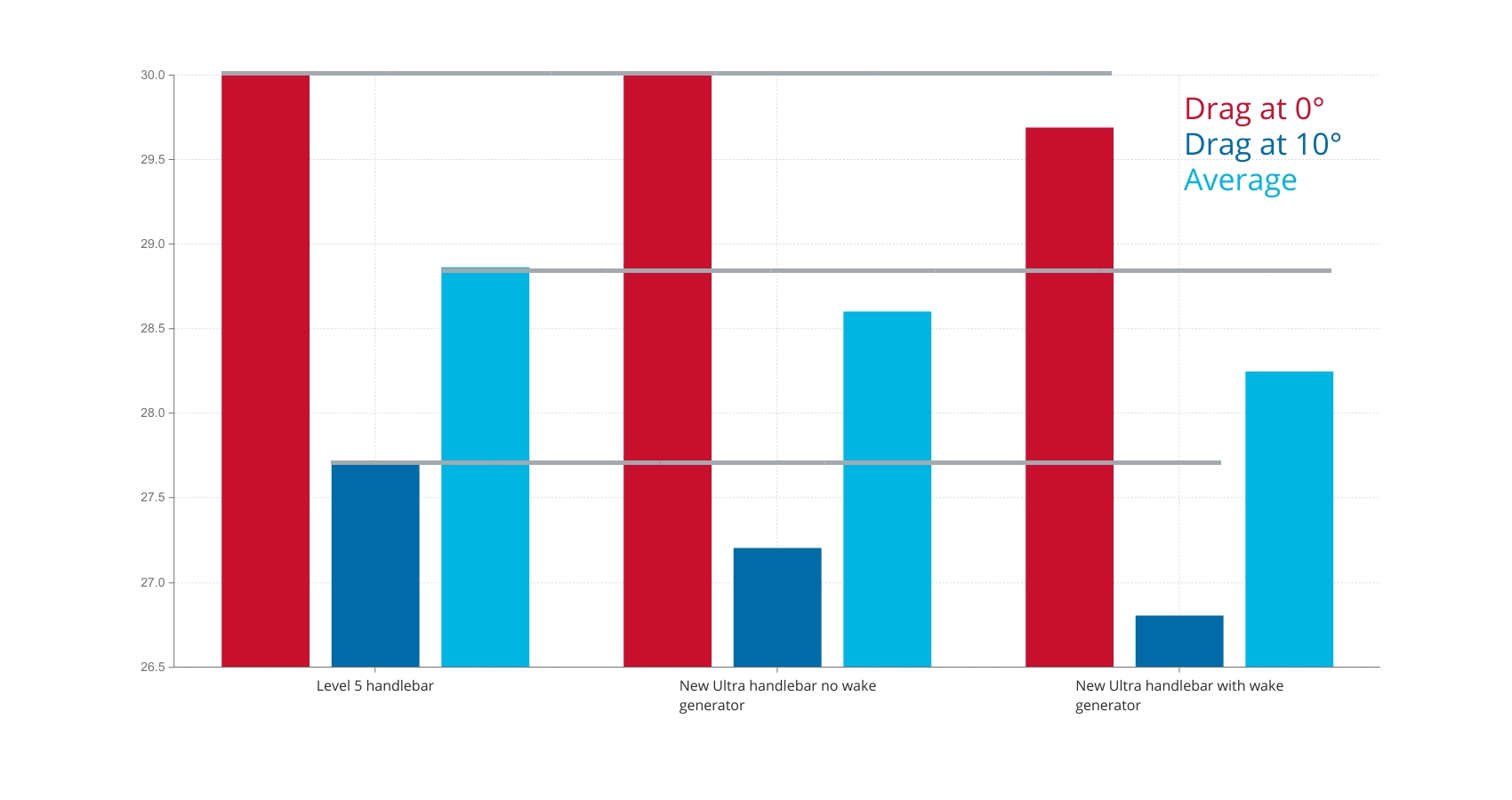
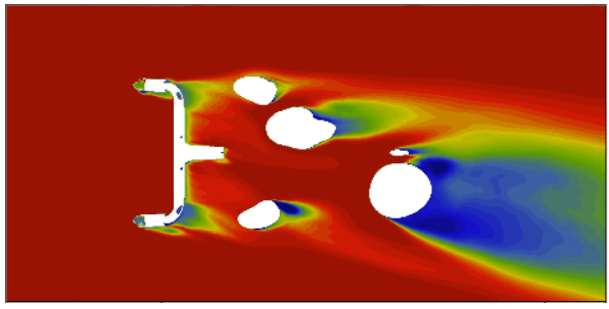
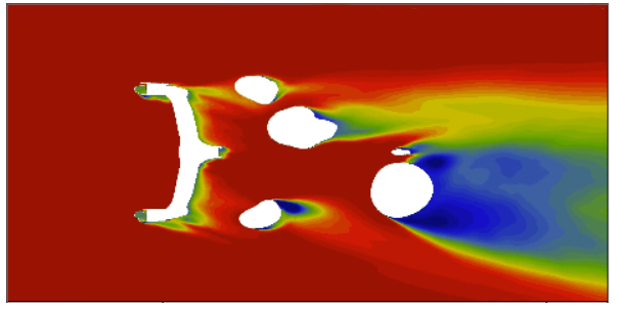

In its early iteration, Ribble discovered the new Ultra handlebar was significantly faster than its own Level 5 handlebar, when testing the bike alone. With a rider, the improved airflow around the central section was negated. In response, Ribble added what we’re calling the ‘twin humps’, and what Ribble calls ‘aero wake generators’.
“Over a conventional airofoil, air goes smoothly across the airofoil, and there’s very little drag off the back. But watch air move over a round ball, it’s a very inefficient shape, it creates more drag - but - which would you rather be riding behind?” Smallwood asks. If physics wasn’t your favourite at school, the answer is the ball.
“The handlebar is directly upstream of the rider - so we looked to manipulate the airflow to create a hole, or a wake, for the rider’s leg or knee to ride in.”
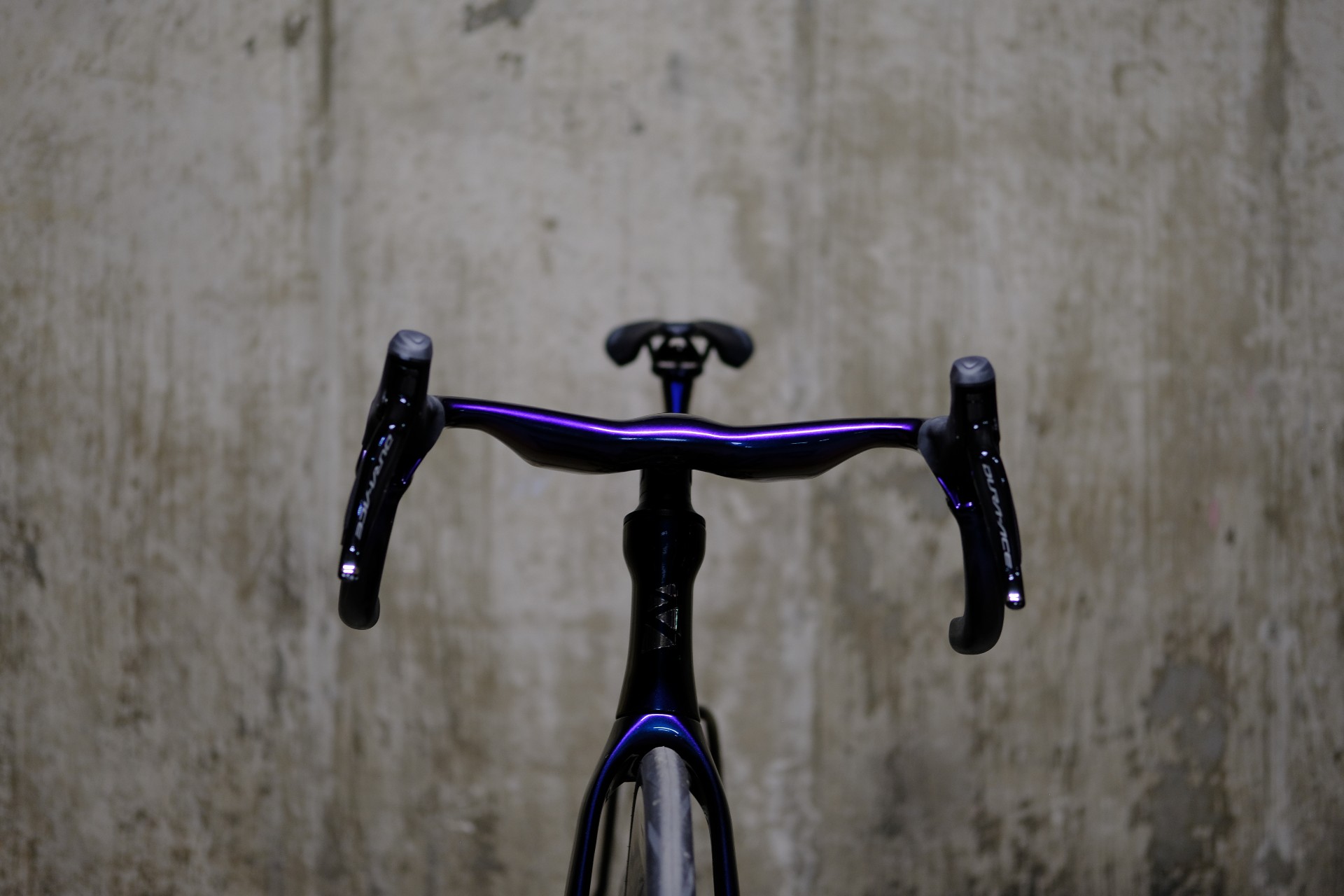
Ribble's Ultra handlebar features 'aero wake generators', or, twin humps
This theory was tested first with Ribble’s head of product, Burrows, but then with both Drops rider Joss Lowden and a mannequin in the wind tunnel, before being repeated outdoors; it would be interesting to know how results might differ, if at all, if the test pool was broadened - but that would constitute a lot more data collection.
The bar is designed to be ridden on a “long and low” position, and features a flare, allowing riders to get narrow on the tops whilst enjoying the stability of a wide stance in the drops. Sizes (measured at the hoods) include 36cm, 38cm and plus a pro version - which will be commercially available - at 33cm. As per all Ribble bikes, riders will be able to specify their handlebar width using the Bike Builder.
Ribble Ultra frame optimisation
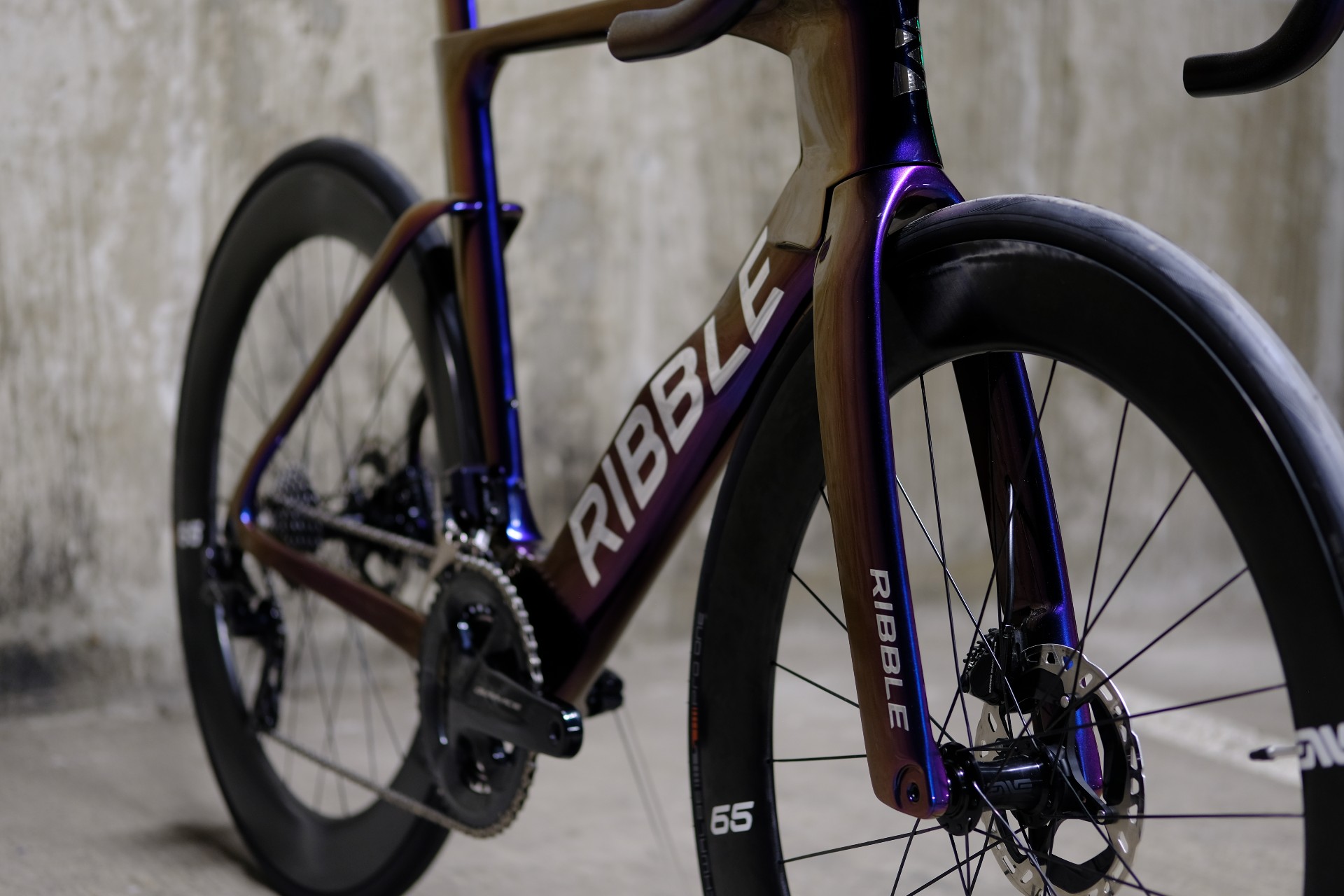
The downtube was heavily optimised and shown to be more aero with a water bottle
Bike only testing
Ribble has provided data from both bike only and rider and bike tests, and clearly, the data sets show a very different story.
“Having looked in detail at the design process other brands have gone through [I know that] most of them are testing without the rider, and this [project] has proven that any claim made in that way is irrelevant,” Smallwood says.
Whilst that is the case at many brand houses, it doesn’t apply in all instances.
BMC, for example, used rider powered track testing when releasing its last Teammachine, providing a claim of six percent, which was an average across a range of riders, tested at 45kph.
Launching the 2019 Trek Madone, the US brand provided data based on a pedalling mannequin with two water bottles.
It’s very common for brands to use pro level speeds when relaying watt savings, however, for slower riders, the time saving tends to be far greater.
The frame has seen extensive development, most notably, at the downtube, headtube, and fork.
Ribble wanted to go further than a traditional airofoil at the downtube, experimenting with moving the position of the chord and the width of the truncated trailing edge.
The final bike uses the ‘optimised chord position with wider truncated trailing edge’ version, which was fastest across the 0-15° yaw sweep, the brand opted to discard the version which optimised the truncated trailing edge width alone, which was faster between 0-10°, Smallwood noted “bearing in mind the UK average is 7 to 8 degrees, 10 is only a little bit windier, so we went with something that was slightly worse up to 10°, but was significantly better in windier conditions.”
Optimisation of the downtube needed to take into account the disruption of a standard water bottle, and also, the torsional stiffness required for the transition to the bottom bracket, with a straight edge aerofoil the chosen profile.
The headtube shape and design was also overhauled, with the trailing edge of the rear of the head tube extended, before integration with the top tube was analysed. Whilst all versions were within a barely noticeable 0.03% of each other at 0° yaw, at 10°, the final model was 1.5% faster - by which point most of us are happy to take the gains.


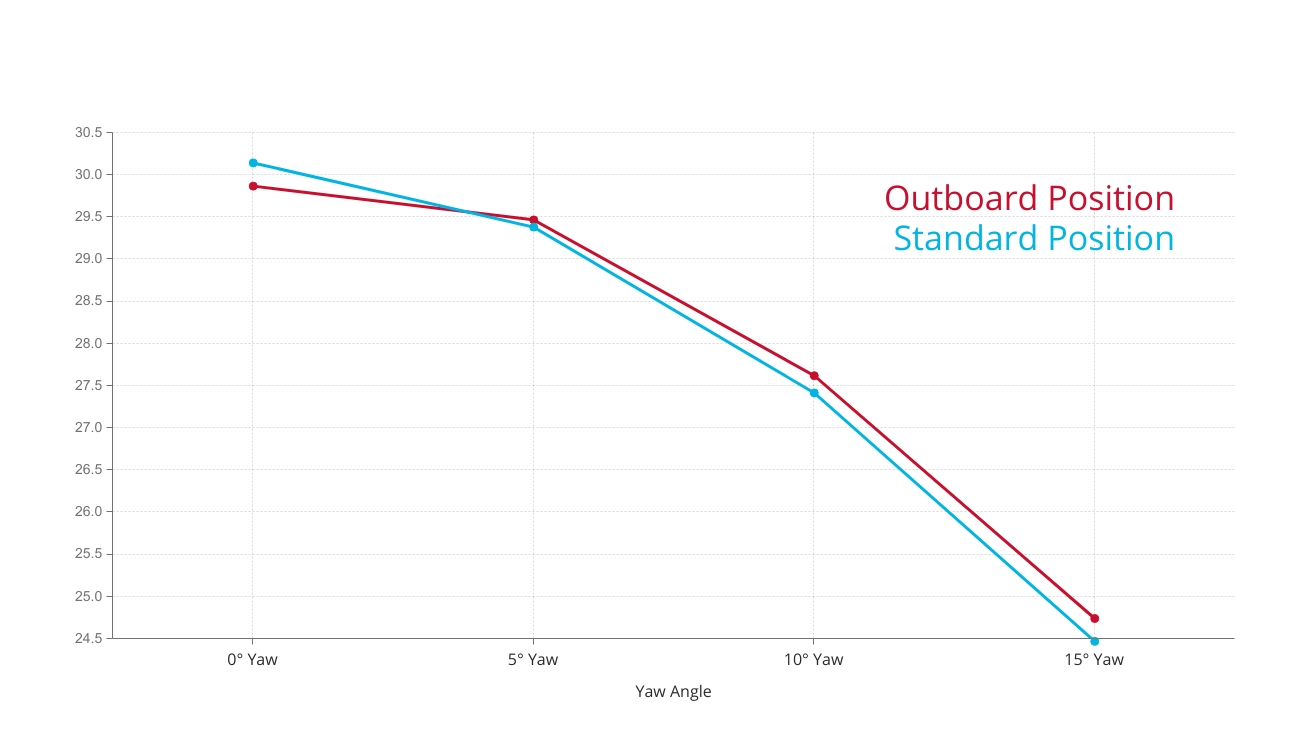
The forks also saw a major overhaul, the result being showstopping 68mm wide fork legs. All testing used the Level 56 wheel, with a Continental GP 5000 tyre, Ribble expects riders on this bike to be running a wheel that’s between 40mm and 80mm in depth.
“Looking at the width of the fork blade, the UCI limits us to working with an 80mm box, so we thought we’d see what happens if we butt up right against that,” Smallwood says. “We tried various different widths, 80mm did give us a significant gain up to 10°, but again it dipped off at 10°, so we actually went with 68mm which gave us more consistent performance.”
Referring to the Hope x Lotus HB.T GB track bike, Smallwood says: “We also also tested [moving the forks] inboard vs outboard, against the riders leg, plus a conventional configuration [vertical from fork axle points], what we saw was that head on the outboard did give us a benefit, just as Team GB did on their track bike, but as soon as you turned to yaw, you lose that gain and it starts to become detrimental.”
How will the Ribble Ultra SL R ride?
In short: I do not know, I've not ridden it. But you want more than that.
Having had some hands on experience with the handlebars, albeit in an office in Bath and not on the road, I’m really impressed. I’ve not yet had a chance to ride the bike, though one is on the way to the Cycling Weekly office imminently.

Chunky tubes on the Ribble Ultra SL R, but dropped seatstays might up the compliance
In terms of the frame, I'm holding on to some reservations - those burly tubes looks pretty unwavering, in response to the question of compliance, Smallwood told me: “We’ve designed and optimised around a 28mm tyre, it can go up to a 32mm, so you get a lot of compliance from wider tyres. [The Ultra has] got a dropped stay, with a kink inboard, which gives an element of vibration absorption, and the one piece carbon handlebar has an element of vibration absorption, it is an aggressive looking bike but it's no worse [in terms of compliance] than a conventional race bike.”
Weight, I hear you ask? From 7.6kg in a medium, that will be the top flight build, with lower spec models weighing more.
The geometry is similar to the existing Endurance SL R, with a marginally lower head tube.
How does it perform against other bikes?
Ribble isn't telling us that. Asked for comparative data, Smallwood told us that whilst the brand has performed tests, it wouldn’t share data as testing protocol deviations with other brands could complicate the picture: “We’ve tested our bike, and other bikes, and I'm confident that our bike performs very well." Shots fired.
Ribble Ultra prices and specs
Ribble Ultra SL builds will start from £3,899. The SL R will begin at £4,299, increasing to £7,299 for the 'hero' build. The brand has also released a Tri edition, at £6,599. The SLR will be available as a frameset only, at £2,999.
- Ribble Ultra SL builds start from £3,899
- These feature the Level 5 handlebar, not the Ultra - the £3,899 model comes with Shimano 105 and LEVEL DB56 Sport Carbon Wheels
- Ultra SL R Sport £4,299
- Shimano Ultegra R8000 2x11 Speed, Ribble Ultra Aero Carbon Integrated Handlebars, LEVEL DB56 Sport Carbon Wheels
- Ultra SL R Enthusiast £4,999
- Shimano Ultegra Di2 R8050 2x11 Speed, Ribble Ultra Aero Carbon Integrated Handlebars, LEVEL DB56 Sport Carbon Wheels
- Ultra SL R Pro £5,499
- SRAM Force eTap AXS 2x12 Speed, LEVEL Ultra Aero Carbon Integrated Handlebar, LEVEL DB56 Pro Carbon Wheels
- Ultra SL R Tri Edition £6,599
- Shimano Ultegra Di2 R8150 2x11 Speed, LEVEL Ultra Aero Carbon Integrated Handlebars, LEVEL DB Pro Carbon Tri-Spoke Wheels
- Ultra SL R Hero £7,299
- Shimano Dura Ace, LEVEL Ultra Aero Carbon Integrated Handlebars, ENVE Foundation 65 Carbon Wheels
- Ultra SL R frameset £2,999

Thank you for reading 20 articles this month* Join now for unlimited access
Enjoy your first month for just £1 / $1 / €1
*Read 5 free articles per month without a subscription

Join now for unlimited access
Try first month for just £1 / $1 / €1
Get The Leadout Newsletter
The latest race content, interviews, features, reviews and expert buying guides, direct to your inbox!
Michelle Arthurs-Brennan the Editor of Cycling Weekly website. An NCTJ qualified traditional journalist by trade, Michelle began her career working for local newspapers. She's worked within the cycling industry since 2012, and joined the Cycling Weekly team in 2017, having previously been Editor at Total Women's Cycling. Prior to welcoming her first daughter in 2022, Michelle raced on the road, track, and in time trials, and still rides as much as she can - albeit a fair proportion indoors, for now.
Michelle is on maternity leave from April 2025 until spring 2026.
-
 'I'll take a top 10, that's alright in the end' - Fred Wright finishes best of British at Paris-Roubaix
'I'll take a top 10, that's alright in the end' - Fred Wright finishes best of British at Paris-RoubaixBahrain-Victorious rider came back from a mechanical on the Arenberg to place ninth
By Adam Becket Published
-
 'This is the furthest ride I've actually ever done' - Matthew Brennan lights up Paris-Roubaix at 19 years old
'This is the furthest ride I've actually ever done' - Matthew Brennan lights up Paris-Roubaix at 19 years oldThe day's youngest rider reflects on 'killer' Monument debut
By Tom Davidson Published